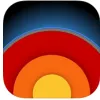Take a look inside 5 images
Earth Primer
Pros: The textbook helps kids visualize difficult concepts with fantastic interactive graphics.
Cons: There's no way to assess learning and a glossary is lacking.
Bottom Line: Though it's pricey and its progress tracking is limited, these interactive graphics will spark curiosity while teaching kids about a variety of Earth Science concepts.
Use Earth Primer as a supplement to an Earth Science unit. Have kids explore a chapter with a partner, making sure they take turns with the interactive features. Then discuss what they learned as a class and have kids make an illustrated glossary for each chapter. There are limitations to keep in mind - since kids have to unlock chapters, it could be difficult to align the chapters with your unit.
Earth Primer is an interactive digital textbook that teaches kids the basics of earth science. There are five chapters: Earth's Interior, Surface, Water Cycle, Biomes, and Sandbox. Each chapter is organized into content areas, or mini-lessons, that focus on a particular concept. For example, Earth's Interior includes mini-lessons about Earth's core, the mantle, volcanoes, rifts, the crust, and plate tectonics. With the exception of Sandbox, all previous chapters must be completed before unlocking the next one. Sandbox is unlocked once kids finish the first chapter and the tutorial for the second chapter. Then, additional tools for the sandbox are unlocked as kids continue to finish chapters.
Kids can swipe through pages and interact with most graphics as they learn about Earth's interior, its surface features, the water cycle, biomes, plate tectonics, and weather. The interactive features are an excellent way to engage kids in learning while helping them to visualize the content. For example, in the chapter about surface features, kids tap to make rain fall over a mountain, simulating the weathering of the mountain over thousands of years. While that simulation is terrific, it's suggestive of a larger shortcoming: Some of the content lacks detail since the attention is continuously focused on the graphics. And since students' knowledge does not necessarily build from one chapter to the next, learning potential is limited. it would be useful if kids could start with the chapter that meets their specific learning needs and progress from there.
The interactive features are excellent, but many of them would be even better if the resulting animations were a bit slower so students had time to process what’s happening. An interactive glossary and built-in assessment tool would also help take this app from interesting to vital.












